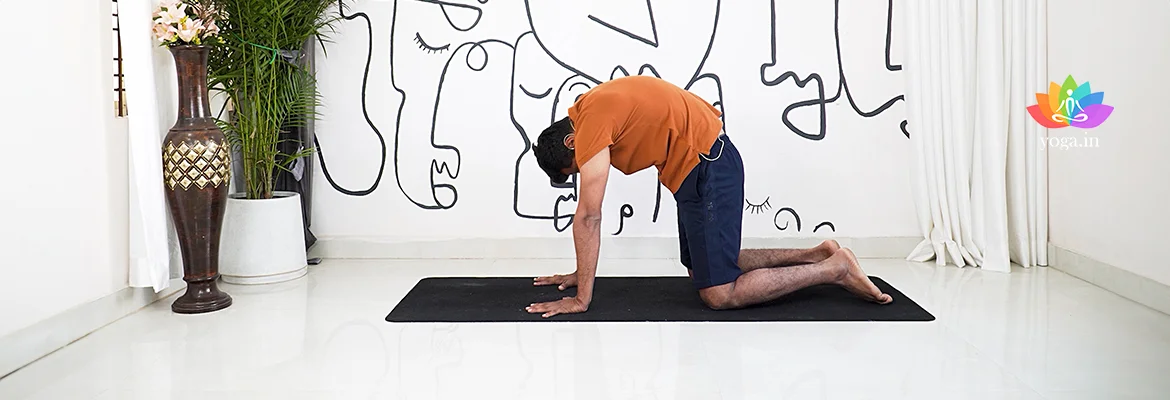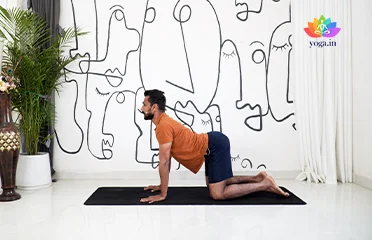Sit in the Vajrasana pose.
Introduction to the Asana
The Sanskrit name is derived from Marjari (मार्जरि) meaning cat and asana (आसन) meaning posture or seat.
Step to get in the pose
-
-
Bend forward with your palms flat on the ground, with your elbows straight and fingers facing forward.
-
Keep 2 feet distance between both the knees & palms.
-
Ensure that your hands and elbows are aligned with the shoulder while your knees are aligned with the hips.
-
Now breathe in and raise your head, curving your back downwards simultaneously so that it develops a concavity. Hold it for 3-5 sec.
-
Now breathe out fully while bending your head down and curving your back upwards.
-
When full exhalation is done, pull in your stomach and buttocks. In this pose, your head will be between your arms.
-
Hold your breath for 3 seconds in this position, emphasizing the spinal arch and contracted stomach.
-
This is one round of Marjariasana. You can do 5 to 10 rounds at a time.
Common mistakes and pitfalls
-
Collapsing the shoulders instead of broadening them.
-
Overarching the lower back.
-
Holding breath instead of coordinating with movement.
-
Lifting the hips too high up or sagging them down.
-
Forcing the chin down instead of releasing naturally.
Benefits
-
Tones the core muscles.
-
Improves spine flexibility.
-
Releases tension in the back muscles.
-
Strengthens your wrists & shoulders.
-
Improves your posture.
-
Stimulates your abdomen and activates the digestive system.
-
Enhances blood circulation as well as oxygen flow through the body.
-
Helps to soothe menstrual cramps.
-
Release of tension in the pelvic floor and vaginal muscles.
-
Provides relief from urinary incontinence or pelvic pain issues.
-
Helps to ease stress and anxiety.
Contraindication
-
Avoid if suffering from chronic lower back pain.
-
Avoid in case of injuries to the shoulders, wrists, neck, hip, knee and back.
-
Avoid if suffering from arthritis of the knee and wrists.
-
Avoid in case of spondylitis.
-
Avoid if suffering from blood pressure.
-
Avoid in case of headaches, migraine, and vertigo.
-
Avoid if undergone a recent abdominal surgery.




